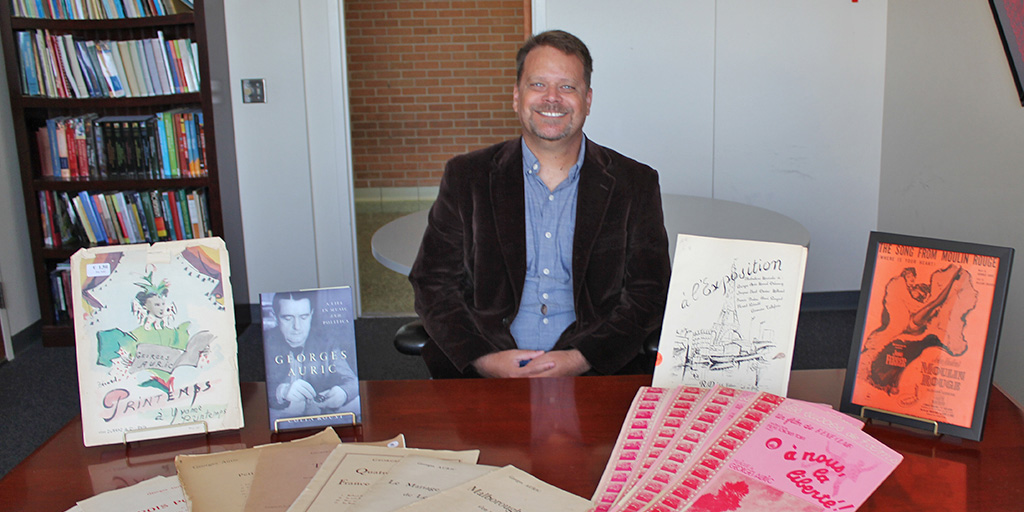Letters show religious side of avant-garde icon Georges Auric

LAWRENCE — As biographer of 20th century French modernist composer Georges Auric, Colin Roust was somewhat chagrined to learn for the first time – immediately after publishing his book in 2020 — of dozens of letters discussing religious and artistic philosophy the young Auric exchanged with leading Catholic intellectuals of his day.
Perhaps the University of Kansas School of Music associate professor shouldn’t have felt badly.
“His widow told me that when she knew him in the 1970s and ’80s, he wasn't a practicing Catholic and hadn’t been for a long time,” Roust said. “He never talked about Catholicism or faith or anything. She had no idea about this, either.”
So Roust dove into the archive to which a fellow researcher pointed him. The resulting article, “Georges Auric’s Letters to Jacques and Raïssa Maritain,” was just published in The Musical Quarterly.
The letters show the young musician wrestling with religion seriously, even as he was attracted to the iconoclastic and artistically earthshaking Paris dada and surrealist movements of the 1920s.
“Part of the revelation of this project, to me, was the depth and the fervor of this kid in his late teens and early 20s, just passionately diving into really heavy and deep Catholic philosophy and finding connections between that and this music that is typically regarded as atheistic,” Roust said.
Auric connected with the older Maritain couple – mainly Jacques – over their shared interest in the philosophies of St. Thomas Aquinas — essentially concluding that an artist glorifies God by creating art that is a pure and unfiltered reflection of their spirit.
Auric’s unhappy though not battle-scarred service in the French army during World War I is covered in the letters, too.
For some time after the war, and always privately, even as Auric grew closer to dada and surrealist figures like Jean Cocteau, Tristan Tzara and André Breton, Auric and Maritain wrestled with the religious implications of the artistic innovations of such “pagan” figures as Stravinsky, Picasso and Proust.
“These letters also provide interesting insights in Jacques’ writings. Auric read drafts of some of Maritain’s books, offering suggestions and copy edits. And whenever Maritain discusses musical aesthetics, he refers to the specific examples that Auric mentions in these letters,” Roust said.
This continued even after Auric became critically canonized as one of Les Six modernist composers in 1920. Roust writes that there was a break with Maritain in 1926, when the composer wrote the music for a satirical ballet that Jacques considered sacrilegious.
“Dada is a kind of anti-art movement,” Roust said. “They're trying to radically upset all the norms of art and what we think we know about art, and it's seen as a very atheistic kind of movement. In part, it's reacting to close ties between religion and art of all kinds. And Les Six is kind of the same thing. They're reacting to composers in the 19th century who brought sacred overtones to their music — people like Richard Wagner and even Debussy, to an extent ... and they're radically thinking about music that is of the moment and of the modern day. It's inspired by circuses, street fairs and that sort of thing. It’s popular music, getting as far away from the church as possible.
“And to suddenly encounter a religious justification for this ultramodern music, it just really complicates it in an unexpected way.”
Image: Colin Roust with his book and some music and other Georges Auric memorabilia he has collected. Credit: Rick Hellman, KU News Service